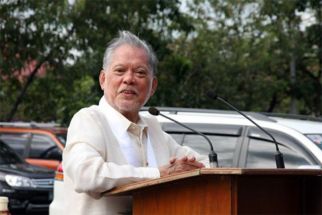#Journeyto30 Crime and punishment
MANILA, Philippines – Convicted rapist Leo Echegaray woke up on the morning of Friday, Feb. 5, 1999 feeling anxious yet defiant. It was, after all, his last day on Earth as he was to be executed through lethal injection in the afternoon, as shown in the front page of The STAR the following day.
The STAR wrote: He took his last meal of prawns, bulalo (beef stew) and grilled fish, smoked several cigarettes and wrote a number of letters. A radio station aired the taped message he had given his wife during her final visit on Thursday.
In the tape, he repeatedly expressed his love for his wife and talked about his dreams of them having a house, a business and a family together.
Dressed in orange prison uniform, clutching a maroon Bible and wearing a crucifix around his neck, Echegaray was escorted to the lethal injection chamber by guards after being roused from his rubber-padded cell at dawn.
His hair close-cropped and graying, Echegaray looked tired and emaciated as he was escorted to the execution chamber one kilometer from his cell in the Maximum Security Compound.
Accompanied by a priest and surrounded by prison guards holding his arms, he wore a button on his chest that read, “Execute Justice not People.”
The execution was carried out in front of 27 witnesses, who included Echegaray’s wife and relatives, Sen. Renato Cayetano, Justice Secretary Serafin Cuevas, other government officials and 11 media representatives.
Twenty-two-year-old reporter Grace Amargo, from The STAR’s sister publication Pilipino STAR Ngayon, described to The STAR’s Joanne Rae Ramirez how the execution went through: “Three minutes after the process began, Echegaray even started snoring. It was a loud, guttural snore.”
Amargo was one of the 11 media representatives who got the rare chance to witness the first public execution of a convicted criminal in the Philippines in two decades (as well as the first execution using lethal injection). The 1987 Constitution had banned capital punishment until 1993 when President Fidel Ramos signed Republic Act 7659 reinstating it.
What Amargo initially thought would be a bloody execution, with Echegaray convulsing and foaming at the mouth, turned out to be different. Instead, Amargo recalled, “He just closed his eyes. It was as if he just went to sleep. He did not look scared or remorseful. He just looked sad.”
According to Amargo, Echegaray closed his eyes at 3:01 p.m. They heard him snore at 3:03 p.m. A minute later, they saw his left foot twitch. At 3:06 p.m. they noticed his chest had stopped heaving. From that point onward until 3:18 p.m., prison officials closely observed his body. The prison doctors finally pronounced him dead at 3:19 p.m.
Outside the viewing room, Echegaray’s widow Zenaida Javier started railing at the public and the media for their alleged unfair treatment of her husband.
In Malacañang, meanwhile, President Joseph Estrada hailed the execution as proof that crime does not pay.
“Let Mr. Echegaray’s death serve as a strong warning against criminal elements,” Estrada said four hours before Echegaray’s execution. The death penalty and Echegaray’s execution were all part of his tough stance against crime that propelled him to the presidency in the previous year’s elections. Throughout 1999, he ordered six more convicted criminals executed as part of his anti-crime campaign.
But, in a 2007 study conducted about the impact of the death penalty on criminality in the Philippines, the Commission on Human Rights (CHR) found out that crime in the country even went up despite the series of executions under the Estrada administration.
“1999 was a bumper year for executions which were intended to abate criminality. Instead, using the same year as baseline, criminality increased by 15.3 percent as a total of 82,538 (from 71,527 crimes in the previous year),” the study noted.
Eventually, before he was deposed in 2001, Estrada gave in to pressure from the Catholic Church and human rights groups and issued a moratorium on executions. Convicted criminals would have their executions deferred and carried over to the next administration.
By 2006, capital punishment was scrapped once more after the staunchly pro-life President Gloria Macapagal-Arroyo signed Republic Act 9346.
The issue of capital punishment comes to the fore once more at a time when presidential candidates are resorting to saber rattling about criminality and promoting capital punishment to propel themselves to public office.
Let history be a reminder to us all that capital punishment never truly deterred crime. It is the fear of hunger, poverty and powerlessness that drive criminals to commit crime. Unless we address these fears, no punishment will scare criminals from being on the wrong side of the law. Like Echegaray, they will only face death defiantly.
- Latest
- Trending





























